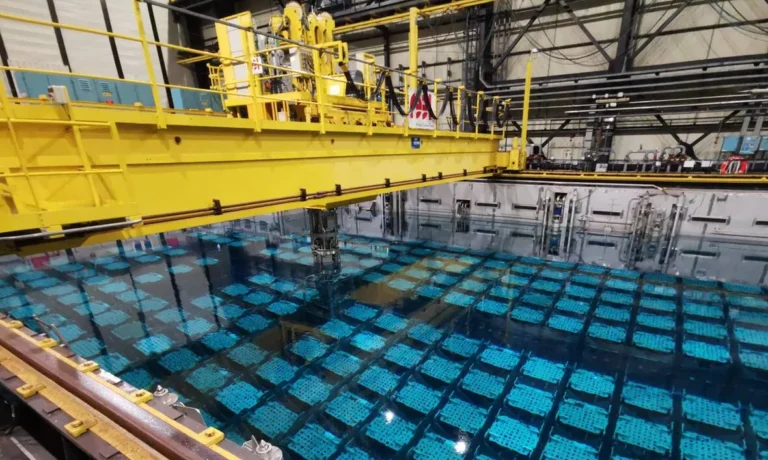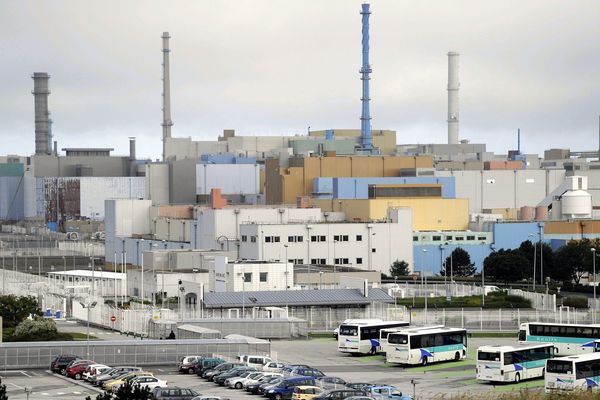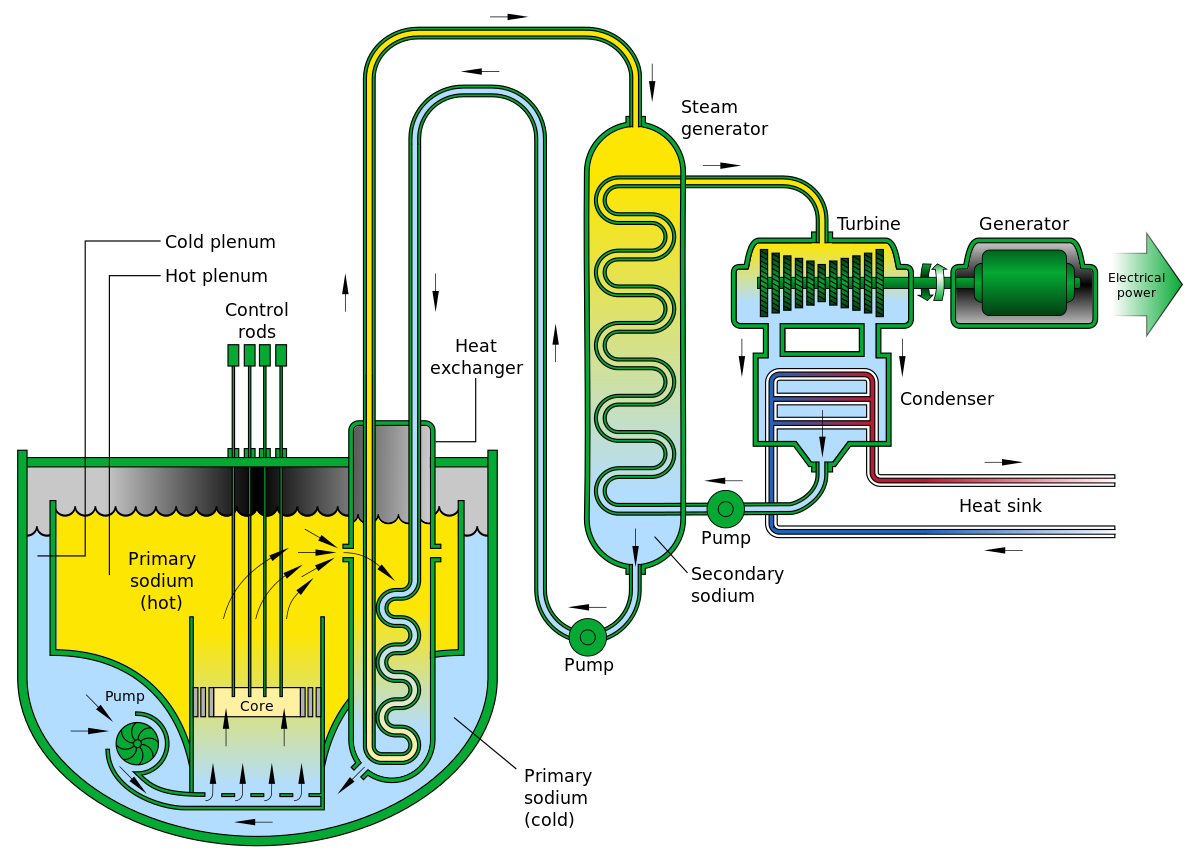Nuclear waste: France seeks a solution between recycling and fast reactors

A few days ago, the French government announced its intention to invest heavily in the other sector of the nuclear renaissance: renewing the infrastructure for storing and recycling spent fuel after its initial use in power plants .
But one question remains unanswered: will the French government simply continue with the current strategy, or will it launch a vast circular economy project in the nuclear sector? Because several players in the sector are calling for the development of fast neutron reactors, which would make it possible to do without natural uranium thanks to the almost infinite recycling of materials.
Will France commit to recycling more of its nuclear fuel, which is currently stored above ground after being used in power plants? On the occasion of the third Nuclear Policy Council organized by the Elysée on Monday 26 February, the Government approved the continuation of the reprocessing of some used materials, also for future EPR (pressurised water) planned from 2035. But a key question remains: until How far do you want to go? In other words, will the executive be content to continue with the current 'mono-money laundering' strategy, or will it launch a vast circular economy project in the atomic energy sector?
Currently, only a small portion of these materials, irradiated for 12-18 months in power plants, are reused. However, to avoid dependence on natural uranium and reduce the volume of final waste to be buried, some of the industry is calling for more to be done. And it is proposing a solution that was abandoned in 2019: the construction of “ fast neutron ” reactors , already in development in several countries and very different from the pressurized water reactors used by EDF.
The principle is to use neutrons not slowed down by a moderator (such as water, in the case of conventional power plants), in order to maintain the fission chain reaction for as long as possible. This would allow 60 to 70 times more energy to be extracted from the same amount of natural uranium and, at the same time, to use the least possible amount of raw materials from mines. In other words, “closing the loop”.
Current mono-money laundering
The current nuclear fuel recycling plant actually cannot close the cycle but, despite being expensive and taking a very long time to renew, it guarantees a partial and only one-off reuse of the exhausted uranium coming from nuclear power plants.
In practical terms, this plant will serve to collect the fuel after its initial use, in cooling pools, and then recycle part of it. These fuels contain approximately 96% energetic materials (95% uranium and 1% plutonium) polluted by 4% actinides and highly dangerous products that cannot be reused. In addition to this waste, which is vitrified and must be buried, two materials are extracted in La Hague: plutonium, a highly radioactive substance, and reprocessed uranium.
The former is recovered to produce a fuel known as Mox (mixed oxide), which will be 'burned' again (and for the last time) in some reactors to produce electricity. Plutonium could potentially be used in nuclear warheads. As for the second, it can be re-enriched to power the reactors again. This happened a few days ago at the Cruas power plant, which in mid-February was loaded with fuel made from recycled enriched uranium (ERU) from Russia.
Called “mono-money laundering,” this method is more circular than the “open loop” method used in the United States. In the United States, the linear economy means that all spent fuel discharged from reactors is considered waste and will be stored without being reused. “If we were to follow the same path in France, the amount of final waste would triple and we would have to review the entire design of the future landfill site planned between Haute-Marne and Meuse,” observes Tristan Kamin, nuclear safety engineer.
More and more plutonium in storage. However, it is not a conclusive process and in any case it leaves a certain, not insignificant, quantity of highly radioactive and unusable waste. Furthermore, plutonium in the form of MOX can no longer be recycled, at least at present.
Multirecycling or fast neutron SMR?
As a result, the executive and industry are considering the possibility of “multi-recycling”: even spent MOX would be reused. “They would be sent back to a reprocessing plant to extract the plutonium again, so they could be reused in power plants. Modifications need to be made to ensure that the plutonium is of sufficient quality, but research has shown that this is feasible, at least for the lifetime of a future fleet of EPR2 reactors, i.e. almost until the end of the century,” explains a expert.
This strategy would save around 40% of natural uranium, according to the French Atomic Energy and Alternative Energy Commission (CEA), compared to around 20% with mono-recycling. Most importantly, it would help limit the amount of plutonium in storage, which has increased in recent years due to the buildup of Mox.
The problem is that, however, the need for uranium for old-type reactors that are already functioning would not decrease, therefore the increase in nuclear waste would progressively continue over time. For this reason, not everyone is in favor of this solution, because it would marginally reduce the use of imported enriched uranium, Yello Cake, while France has thousands of tons of depleted uranium.
To really save raw materials, the only possible option would be to close the cycle by using fast neutron reactors. In practical terms, this type of machine could exploit the 330,000 tons of depleted uranium stored in France, in addition to the famous plutonium. Most importantly, such an installation would produce as much plutonium as it consumes when fissioning atoms to generate electricity. As a result, there would no longer be a need to import natural uranium to keep the nuclear fleet running.
Another (non)decision taken by the Nuclear Policy Council on Monday could provide a clue to the Government's intentions in this area. Although the Council was expected to confirm the choice of the CEA site of Marcoule, in the Gard region, as the site for EDF's first small nuclear reactor (SMR), the verdict was postponed until the autumn. And rightly so: the news had sparked opposition, as this research center was originally intended to host a fast neutron reactor prototype as part of the Astrid program (interrupted in 2019 for economic and political reasons). In the early 1970s, Marcoule was also home to the Phénix prototype fast neutron reactor, which was closed fifteen years ago.
EDF's SMR would just be a small pressurized water reactor, NOT fast neutron reactors, so it wouldn't solve the problem, rather it would make it bigger. The fact that this project is not started in a location that, instead, is dedicated to the development of fast reactors could indicate how the French government intends to at least evaluate the possibility of achieving a closed cycle for nuclear fuel.

Thanks to our Telegram channel you can stay updated on the publication of new Economic Scenarios articles.
The article Nuclear waste: France seeks a solution between recycling and fast reactors comes from Economic Scenarios .
This is a machine translation of a post published on Scenari Economici at the URL https://scenarieconomici.it/rifiuti-nucleari-la-francia-cerca-una-soluzione-fra-riciclo-e-reattori-veloci/ on Sun, 10 Mar 2024 13:28:46 +0000.


